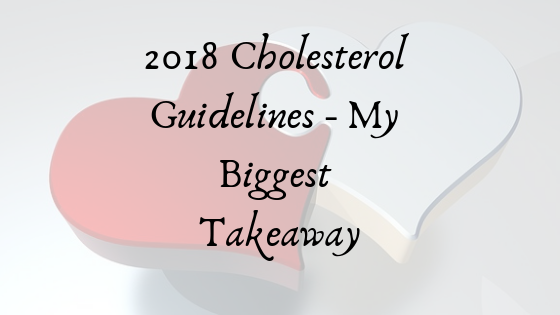In late 2018, ACC and AHA came out with an update to their cholesterol guidelines. The last update was from 2013 so PCSK-9 inhibitors hadn’t even been approved at that time.
Very High Risk Patients – My Biggest Takeaway
I always had a hard time knowing when to recommend further
What is a very high-risk patient? This type of patient is a secondary prevention patient (i.e. already had a heart attack) who remains with risk factors. This is usually one of those patients where you know it when you see them. The patient who has had numerous heart attacks, still smokes, has diabetes, has had a heart attack while on high dose statin, or has CKD would be classified as high risk. You can find a full list of criteria here.
The goals are back. In this type of very high risk patient, I previously really struggled knowing what to do as the 2013 guidelines did not give much guidance. Now, in this type of patient, the LDL goal is going to be 70. We like goals and it is easy to go by the numbers.
Let’s take an example. We have a
Some may make the argument that ezetimibe will not lower LDL that much and while that is a valid argument, I would want to see what we could do with adding that agent prior to a PCSK9 inhibitor. This is due to the significant expense of the PCSK9 inhibitors. There was a recent price reduction reported, but the cost is still very high. Ezetimibe will be much cheaper, but will likely not reduce LDL as much as a PCSK9 inhibitor. This brings up a huge opportunity to talk to our patients and help them work through the risks, costs, and potential benefits of each agent.
Adherence deserves an additional mention. Statin adherence rates are abysmal. When you have a patient presenting with elevated cholesterol who is on a statin (listen to the podcast), you have to remember to monitor and assess for adherence issues. I’ve had patients skip doses, take half-doses, or simply forget to take their statin for various reasons. Here are a few more pearls on patient adherence you need to remember.
The guidelines do allow for triple therapy (ezetimibe, statin, PCSK9 inhibitor) for those very high-risk patients who are not getting to the goal of <70. That will be a consideration in some patients that we have a hard time getting down that LDL.
- 30 medication mistakes PDF
- 18+ Page Drug Interaction PDF
- 10 Commandments of Polypharmacy Webinar based on my experiences in clinical practice



I agree with your assessment concerning the hi-risk, elevated lipid patients. Adding Ezetimibe to high dose statin dosages rarely brings the LDL number down to the consensus level of 70. However, before you begin your long drawn prior authorization process to request PCSK9 inhibitor therapy one of the insurer’s first questions is going to be “Did you try adding Ezetimibe to the patients’ statin therapy?”
Thanks for the comment Michael!
Do the PCSK9 inhibitors have favorable cardiovascular outcome data or are they just very good at lowering LDL?
Yes, they do have outcomes data. Can’t recall the specific trials right now, but I suspect a quick google search will get you there! Eric